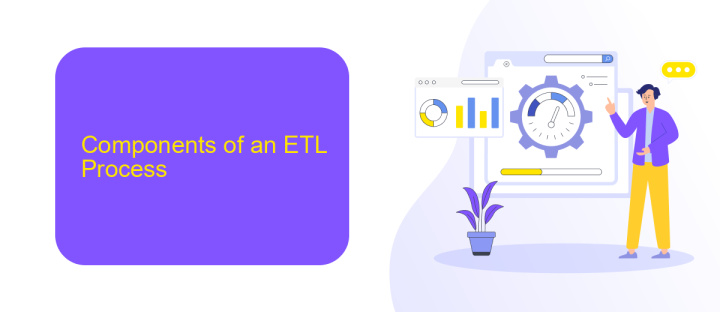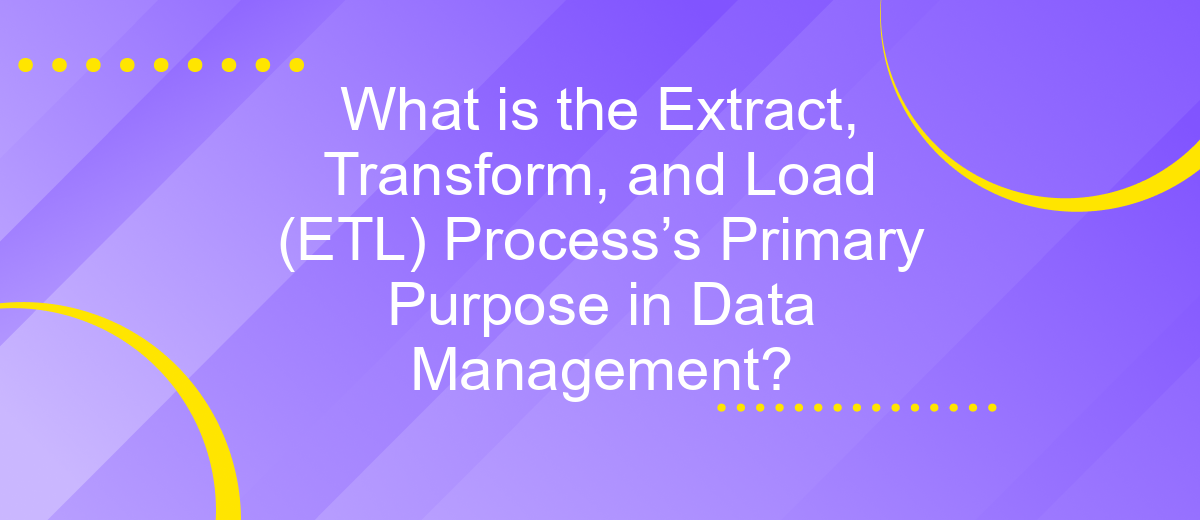What is the Extract, Transform, and Load (ETL) Process’s Primary Purpose in Data Management?
The Extract, Transform, and Load (ETL) process is a cornerstone of data management, serving as a critical methodology for integrating and consolidating data from various sources into a unified, accessible format. This process ensures that data is accurate, consistent, and ready for analysis, thereby enabling organizations to make informed decisions and gain valuable insights.
Introduction
In the realm of data management, the Extract, Transform, and Load (ETL) process plays a pivotal role in ensuring the seamless integration and utilization of data from various sources. ETL is a fundamental procedure that involves extracting data from disparate systems, transforming it into a consistent format, and loading it into a centralized data warehouse or database for analysis and reporting.
- Extract: The first step involves retrieving raw data from multiple sources, such as databases, cloud services, and applications.
- Transform: This phase includes cleaning, filtering, and converting the extracted data into a uniform format suitable for analysis.
- Load: Finally, the processed data is loaded into a target system, such as a data warehouse, where it can be accessed for business intelligence and decision-making.
Effective ETL processes are crucial for businesses to gain valuable insights from their data. Tools like ApiX-Drive can automate and streamline these integrations, making it easier to connect various data sources and ensure that the data is accurate and up-to-date. By leveraging such tools, organizations can enhance their data management capabilities and drive better business outcomes.
Components of an ETL Process

The ETL process consists of three main components: Extract, Transform, and Load. During the extraction phase, data is collected from various sources such as databases, APIs, and flat files. This step is crucial for gathering raw data that will later be processed. The extraction process must ensure that the data is accurate and complete, which often involves handling different data formats and structures.
In the transformation phase, the extracted data undergoes a series of operations to convert it into a suitable format for analysis. This may include data cleansing, normalization, aggregation, and enrichment. Tools like ApiX-Drive can be particularly useful in this phase by automating the integration and transformation of data from various sources, ensuring consistency and accuracy. Finally, the load phase involves transferring the transformed data into a target data warehouse or database, where it can be accessed for reporting and analysis. This step must be executed efficiently to ensure that the data is available for timely decision-making.
ETL Data Transformations

ETL data transformations are a crucial step in the data management process, ensuring that raw data is converted into a usable format for analysis and reporting. This phase involves a series of operations designed to cleanse, structure, and enrich the data, making it suitable for the target data repository.
- Data Cleaning: This step involves removing inconsistencies, duplicates, and errors to ensure data quality.
- Data Standardization: Converting data into a common format to ensure consistency across datasets.
- Data Enrichment: Adding additional information to the data to make it more valuable for analysis.
- Data Aggregation: Summarizing data to provide a higher-level overview, making it easier to analyze.
- Data Integration: Combining data from multiple sources into a single, cohesive dataset.
Services like ApiX-Drive simplify the integration and transformation processes by offering automated workflows that connect various data sources. This allows businesses to focus on analyzing data rather than spending time on manual transformations. By leveraging such tools, organizations can ensure that their data is accurate, consistent, and ready for insightful analysis.
Benefits of Using the ETL Process

The ETL process is essential in data management as it ensures that data is accurately extracted from various sources, transformed into a suitable format, and loaded into a data warehouse or other storage systems. This process streamlines data integration and enhances the quality of data available for analysis, making it a critical component for businesses relying on data-driven decisions.
One of the key benefits of using the ETL process is its ability to handle large volumes of data efficiently. By automating the extraction, transformation, and loading stages, organizations can save significant time and resources, allowing them to focus on more strategic tasks. Additionally, ETL tools can improve data consistency and reduce errors, leading to more reliable insights.
- Improved data quality and consistency
- Enhanced data integration from multiple sources
- Time and resource savings through automation
- Better decision-making with accurate and timely data
Services like ApiX-Drive can further optimize the ETL process by providing seamless integration solutions. ApiX-Drive allows businesses to connect various applications and automate data workflows without extensive coding, making it easier to manage and utilize data effectively. This integration capability ensures that data is always up-to-date and readily available for analysis, driving better business outcomes.
Conclusion
The Extract, Transform, and Load (ETL) process is a cornerstone of effective data management, ensuring that data is accurately and efficiently moved from source systems to data warehouses and other analytical platforms. By extracting data from various sources, transforming it into a usable format, and loading it into a target system, ETL processes enable organizations to consolidate and analyze data, driving better decision-making and operational efficiency.
In today's data-driven world, the automation and integration of ETL processes have become increasingly important. Tools like ApiX-Drive streamline the integration of various data sources, reducing manual effort and minimizing errors. By leveraging such services, businesses can enhance their ETL workflows, ensuring timely and accurate data availability for analysis and reporting. Ultimately, the primary purpose of the ETL process in data management is to provide a reliable foundation for data-driven insights and strategic business intelligence.
FAQ
What is the primary purpose of the ETL process in data management?
Why is data transformation important in the ETL process?
How does automation benefit the ETL process?
What challenges might arise during the ETL process?
How can businesses ensure the success of their ETL processes?
Do you want to achieve your goals in business, career and life faster and better? Do it with ApiX-Drive – a tool that will remove a significant part of the routine from workflows and free up additional time to achieve your goals. Test the capabilities of Apix-Drive for free – see for yourself the effectiveness of the tool.

